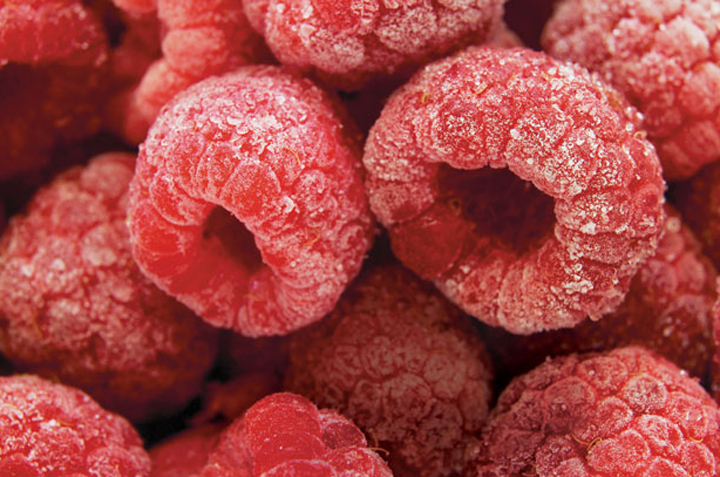For fruit that does not turn brown
Examples: strawberries, raspberries, blueberries, cranberries, currants, rhubarb
- Choose ripe fruit.
- Wash, sort and dry the fruit (to dry fruit, spread it on clean dish towels on the kitchen counter). Cut as needed.
- Arrange the fruit in a single layer on trays or baking sheets lined with parchment paper.
- Put in the freezer, preferably at -18 °C or colder. Horizontal or vertical freezers are a better choice than a small fridge freezer because their temperature is colder. Fruit freezes faster and this promotes the formation of small ice crystals, less damaging to the fruit’s texture.
- When the fruit is frozen (this can take from 30 to 60 minutes), transfer it into freezer bags. Remove as much air as possible from the bags and seal tightly. Return to the freezer immediately.
For fruit that does turn brown
Examples: apples, peaches, plums, nectarines, apricots
The browning of fruit is caused by an oxidation reaction involving three elements: phenolic compounds, enzymes naturally present in the fruit and oxygen from the air. The reaction takes place spontaneously when the fruit is cut. The most effective way to prevent browning is to treat the fruit with vitamin C (ascorbic acid) or an acid like lemon juice (which, in addition to being highly acidic, contains lots of vitamin C).
- Choose ripe fruit.
- Peel apples with a knife. Soak other fruit for one minute in a pan of boiling water. Remove and place in cold water to prevent it from cooking. The skin will come off easily by rubbing it.
- Cut the fruit in slices or cubes (depending on the intended use) and place it in a large bowl.
- To prevent browning, treat the fruit with one of these three techniques:
1. For each litre (4 cups) of fruit, dissolve 1 ml (1/4 teaspoon) of pure ascorbic acid powder or crystals (sold in pharmacies) in 60 ml (1/4 cup) of water or pulverize one vitamin C tablet (at least 800 mg) and dissolve it in 60 ml (1/4 cup) of water. Mix with the fruit and coat well.
2. Douse each litre (4 cups) of fruit with 25 ml (5 teaspoons) of fresh lemon juice. Toss to coat well.
3. For each litre (4 cups) of fruit, add 20 ml (4 teaspoons) of “Fruit Fresh” powder (a mixture of dextrose and ascorbic acid, sold in most supermarkets). Toss to coat well and let stand for 10 minutes.
4. Spread fruit on trays or cookie sheets lined with parchment paper and follow the steps for fruit that does not turn brown.
Thaw in the fridge, microwave or on the counter?
Researchers in Poland studied three thawing techniques: at room temperature, in the fridge or in the microwave. The results: fruit had a nicer appearance and lost less liquid when it was thawed in the fridge. The only thing to remember: factor in enough time because it will take a while! It takes six hours to thaw 500 g (1 lb) of fruit. Whatever technique you choose, the fruit will be better if it is used in recipes or served while it is still frosty.


